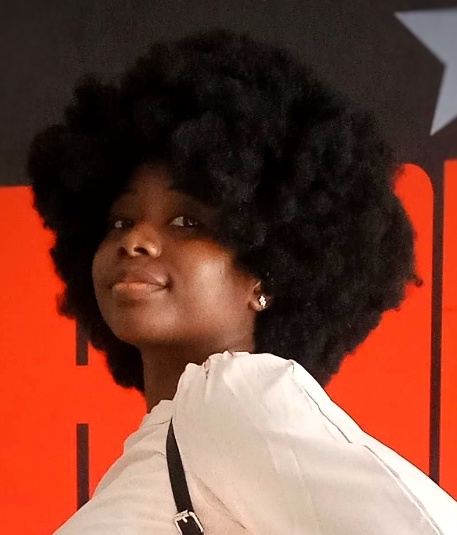Can You Really Use a Black or White Sheet As a Projector Screen?
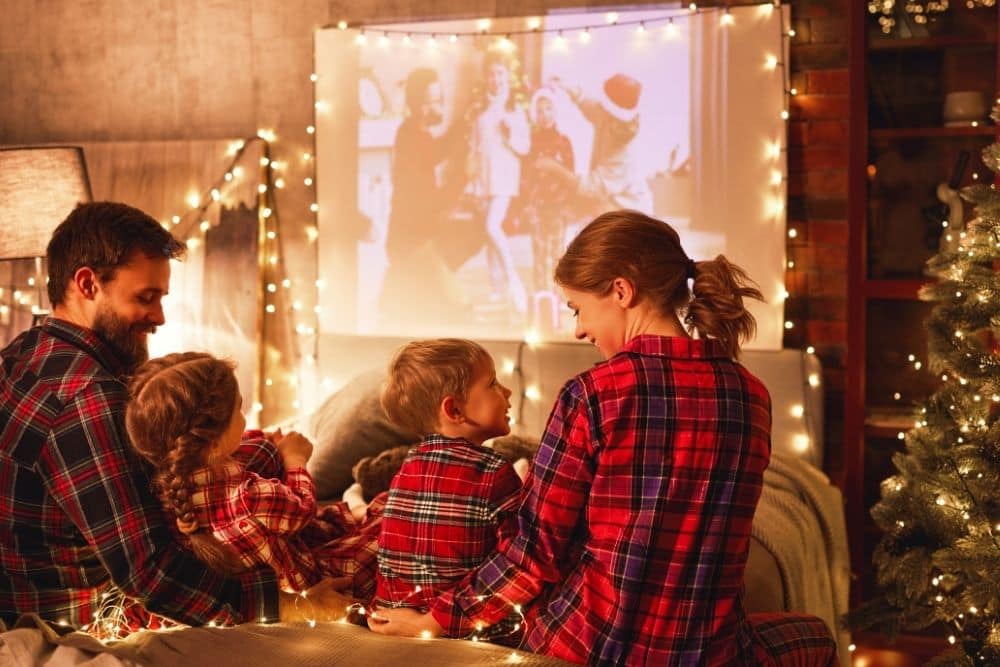
What To Know
- A white sheet can serve as a DIY projector screen for both indoor and outdoor use, but texture and thickness impact image clarity and brightness.
- Black sheets absorb more light and are less reflective than white sheets but can enhance contrast in low ambient light conditions.
- For best results, use a non-translucent, smooth sheet and match the projector’s aspect ratio, with additional emphasis on combating translucency outdoors.
Are you struggling with a damaged projector screen for your movie night? Learn how using white or black sheets can be a DIY lifesaver.
This article uncovers the strengths, pitfalls, and recommendations for using black and white sheets for projection.
Quick Navigation
Can You Use a White Sheet as a Projector Screen?
Yes, you can use a white sheet to make a projector screen for indoor or outdoor entertainment.
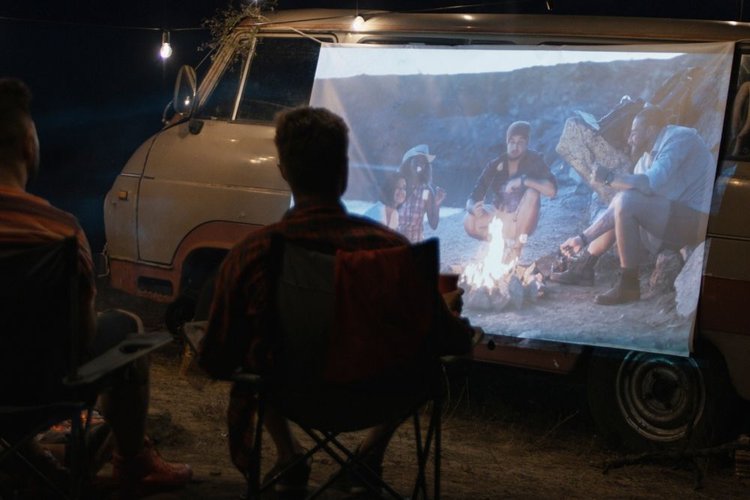
As an emergency option, any white sheet will work—but if you want a high-quality experience, you must get picky.
The texture of a sheet can impact its reflectivity and affect the clarity of images projected onto it—as you’ll understand later in the article. We advise you to choose a smooth and thick white sheet for your projector screen material.
Where you cannot get thick materials, a bright projector (around 3,500 lumens) can help combat translucency. Nonetheless, using a thin white projector sheet outdoors for daytime screening will be a challenge.
How About Black Sheet as a Projector Screen?
Yes, you can use a black sheet for a DIY projector screen.
However, black projector screens are generally less popular because they have unique challenges.
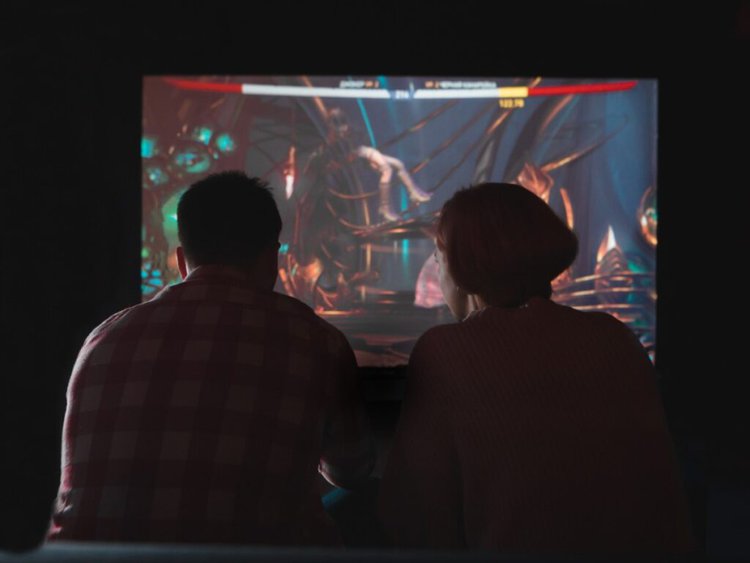
Sheets (and other general-purpose cloth material) aren’t designed with the intent to be projector screens. Hence, reflectivity or gain is often lacking.
However, this lack of reflectivity is particularly noticeable with black sheets because black color absorbs more light than it reflects. This means that you’d need to pair black projection sheets with bright projectors and low ambient light.
On the other hand, the absorbency improves contrast, causing the dark colors in your image to stand out.
Factors That Affect Black/White Sheets As Projection Screens
Before we discuss how to use sheets for DIY screen projects, we’ll explain certain factors that can cause issues with image quality.
Low Screen Gain
Screen gain measures how reflective a material/surface is compared to an ideal reflective surface (i.e., an industry-standard whiteboard).
If a screen has a gain of 1.5, it means that images reflected off it will be 1.5 times as bright as those on the whiteboard. A gain of 1.6 and above is high, while anything below 1.6 is considered low.
Sheets typically (white and black) fall in the low gain category. However, white sheets still have better gain than black sheets—in the same environment and with the same projector, pictures on a black sheet will appear dimmer.
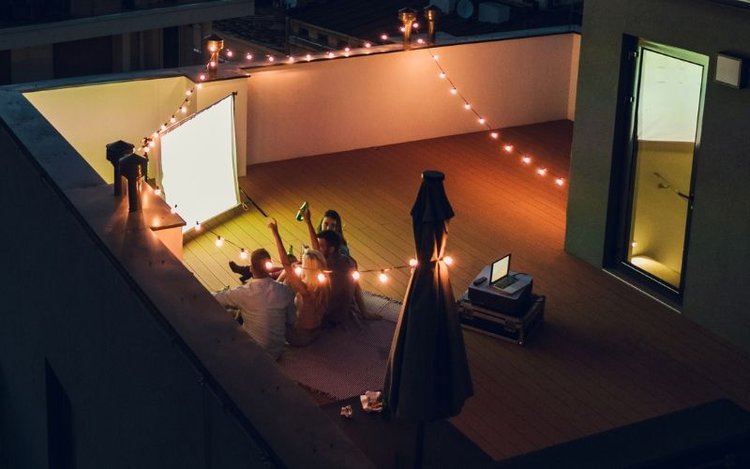
White color has a higher gain because it is highly reflective. Hence, white projector sheets do better outdoors with ambient lighting. You can improve the brightness of black sheets by controlling ambient light to improve contrast.
Texture of Material
Ordinary sheets may not possess the smooth surfaces of dedicated projector screens, so they are not ideal for achieving the highest level of sharpness and clarity.
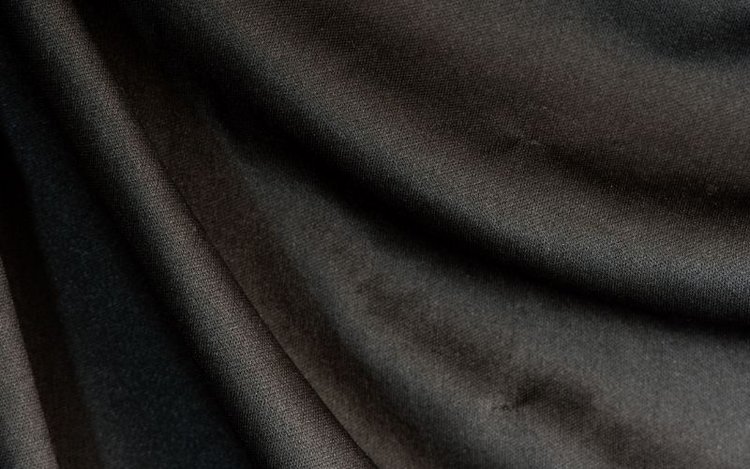
Images on a projector screen are created through light reflection. The images are clearer when the surface is smooth enough for light beams to be reflected at the same angle. However, when dealing with textured surfaces like cloth or walls, light scatters in different directions.
Wrinkles and creases on the sheets can distort the projected images and affect your viewing experience.
Mismatched Aspect Ratio
The aspect ratio represents the ratio of an image’s width to its height. Most modern projectors allow you to change your aspect ratio, choosing between rectangular industry standards like 16:9, 16:10, and 4:3.
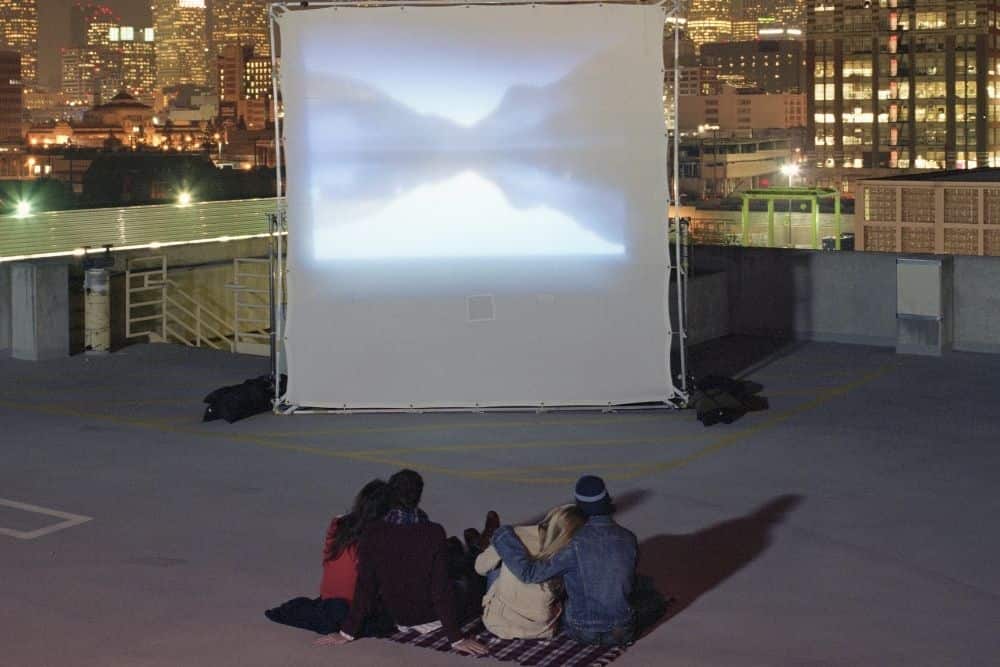
Now, bed sheets come in standard sizes that may not be compatible with your projector aspect ratios. If the projector’s image is widescreen (common among HD movies) while your projection sheet is more of a square, you’ll have image spillovers and inaccurate representation of the content.
If you switch your projector to a 4:3 aspect ratio to match the sheet, it will squash the image and affect visual quality. Hence, we recommend resizing your sheets to create rectangular screens compatible with widescreen aspect ratios.
Translucency
Translucency describes how easily light passes or diffuses through a material. Translucent materials don’t make good projection screens because they allow ambient light to pass through, resulting in washed-out images with reduced contrast and color accuracy.
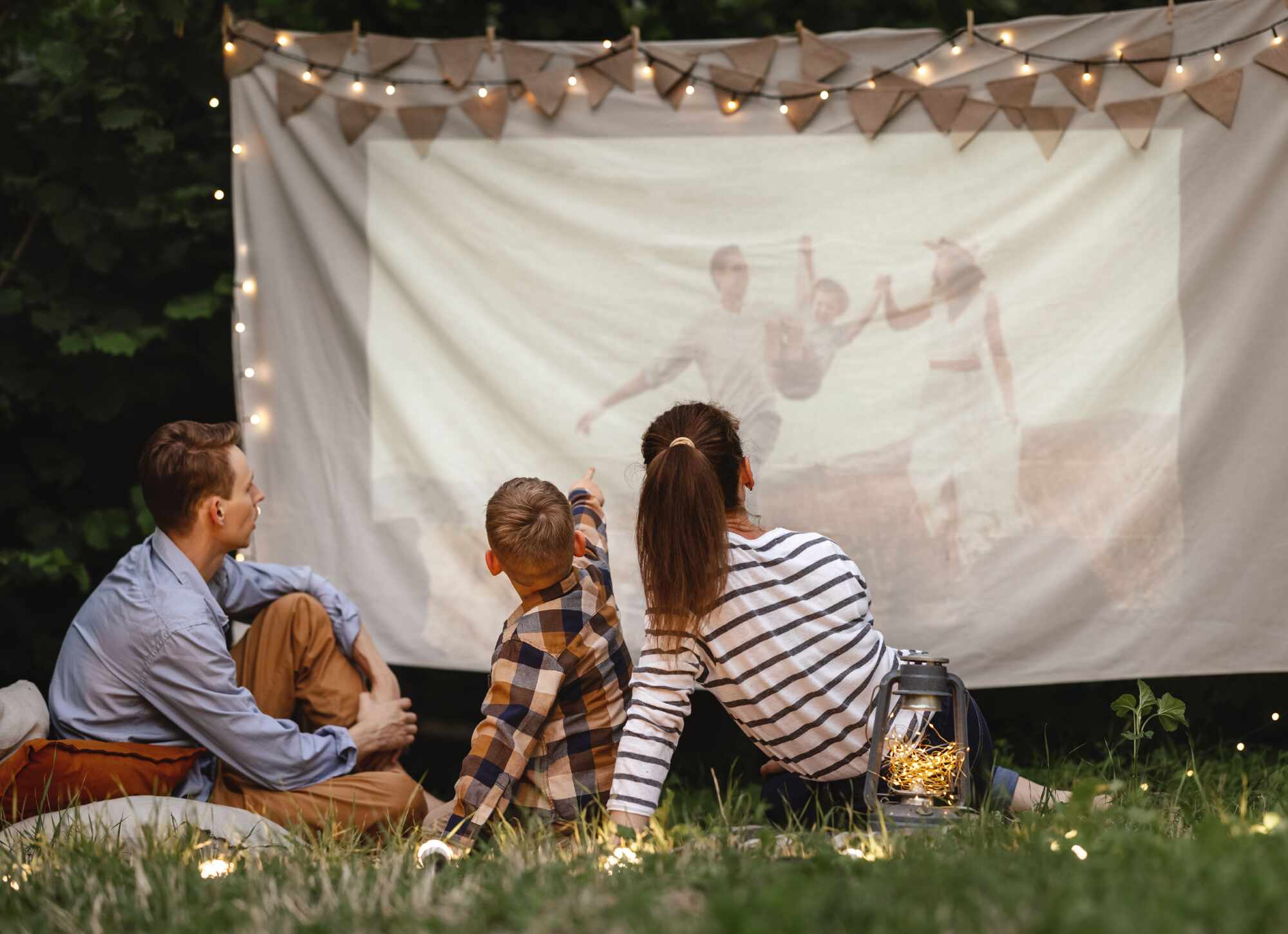
Sheets are typically translucent, but the reflective nature of white sheets helps combat the effects of translucency to a certain degree.
You can opt for thicker and less translucent material, use a black sheet behind your white one, or cut out ambient lighting during projection.
How To DIY Your Sheet Into a Projector Screen
With the right guidance and materials, you can transform a regular sheet into a DIY projector screen for high-quality entertainment. In this section, we’ll show you how!
Materials
Tools
Steps to make a DIY projector screen
STEP 1: Frame Preparation
Measure and cut the PVC into pieces for a rectangular frame and supporting brackets. Ensure the measurements match your desired screen size and aspect ratio.
- Four pieces for the top frame
- Four pieces for the bottom frame
- One piece for the left frame
- One piece for the right frame
Note: You can use two pieces each for the left and right sides of the frame, depending on your desired screen size.
STEP 2: Frame Assembly
Find a large space and lay out all the pieces in the way they should fit together. Join the pieces together using the different connectors where they are needed.
Elbows: To join the frame pieces at four corners.
Straights: To join two frame pieces together for extra length.
Tees: To join two top frame pieces to a supporting bracket
Crosses: To join two lower frame pieces to a supporting bracket, leaving one connector spot for the stakes.
STEP 3: Projection Sheet
Measure your sheet and fold it over. Sew along the sides to make a casing that you can slip onto the projection frame.
Place the sheet on a flat surface and carefully slip the sheet over the frame, making sure it is centered and wrinkle-free. You can secure the sheet to the frame with a staple gun.
STEP 4: Mounting
Use tape to measure the space between the two cross-connectors on the frame.
You can set up an outdoor mount by hammering your two wooden stakes into the ground. Use your initial measurement to map the positions.
Gently lift the screen and place it above the stakes, aligning the cross connectors with the stake. Don’t let go until the cross connectors fit firmly over the wooden stakes.
10 Materials You Can Use for Making an Outdoor DIY Projector Screen
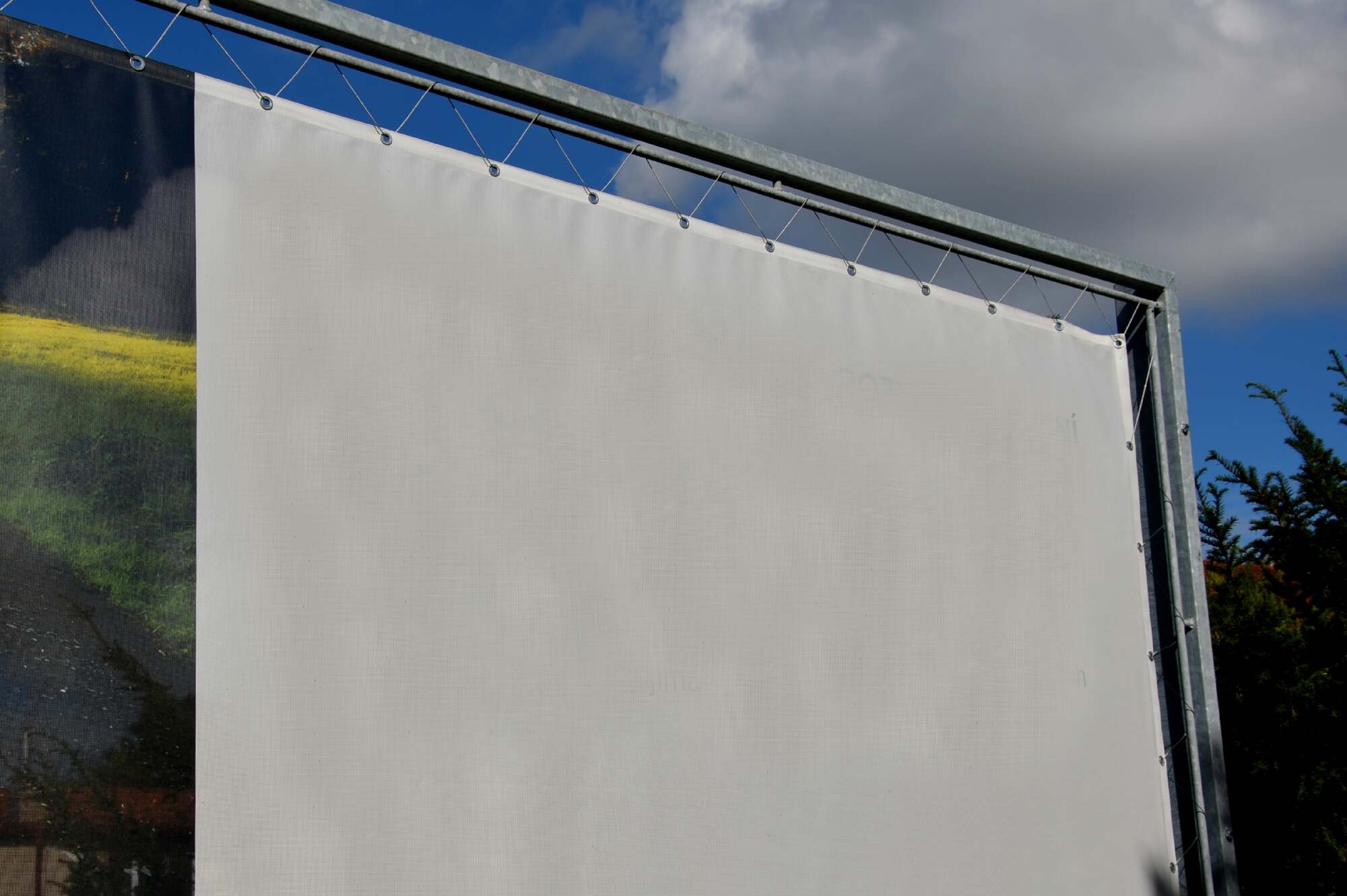
In addition to white or black sheets, you can use other materials for DIY projector screens. Each material has a different impact on the quality and longevity of your screen.
You can use walls, tarps, blackout clothes, projector screen paint, and other materials. If you’re ready to get creative, check out these 10 Cheap DIY Outdoor Projector Screen Alternatives!
Conclusion
When it comes to DIY projector screens, improvisation can be fun. Nonetheless, it’s essential to know and address the limitations of certain projection screen materials.
If you’re planning an outdoor movie night, using a sheet as a makeshift projector screen can be convenient. However, ensure you get the right kind of sheet to improve picture quality.
White sheets display brighter pictures than black sheets. However, ensure your sheet is non-translucent, smooth, and paired with a bright outdoor projector.
Gabriella ‘Diogo is a technical writer with a vested interest in tech hardware and equipment. She shares her knowledge and processes in an easy-to-grasp, lighthearted style. When she’s not testing or researching device performance, you’ll find her writing short stories or rewatching episodes of her favorite sitcoms.

